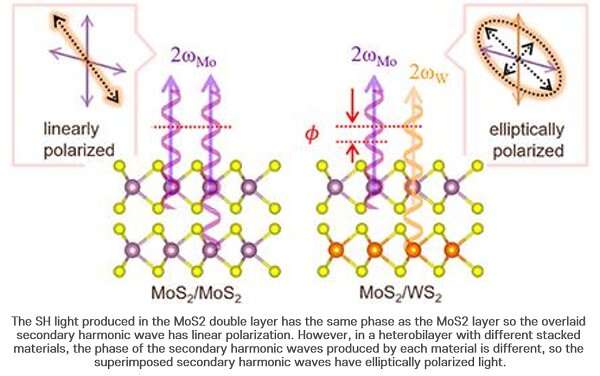Since the invention of world’s first laser—the ruby
laser—in 1960, the human desire to control light has spread to
various industries, including telecommunications, medicine, GPS,
optical sensors and optical computers. Recently, a POSTECH research
team has taken a step closer to its goal of controlling light by
identifying nonlinear optical phenomena occurring in heterobilayers
composed of two-dimensional materials.
Research team identifies second-harmonics generation
interference in 2-D heterobilayers



